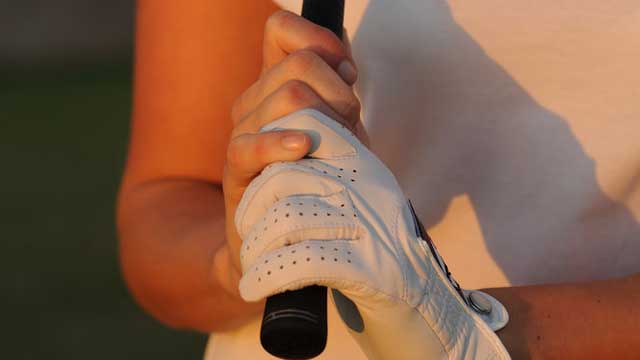NEWS
All in Hand: Your hands' path determines success

It's mind boggling to consider all the elements of correct body movement required to arrive at impact with a square clubface along with a clubhead path down the target line -- positioning ourselves for a straight shot. We tinker with grip, stance, swing plane and a host of other swing elements to hit that pure shot straight down the fairway. Tinkering is good. Some teachers call this "experimenting" with swing elements for the sake of learning and understanding the swing. I'm going to advocate in this article "tinkering" with the path of one's hands through impact.
Think about this: In so many sports we play, the path of our hand or hands moves directly at the target. In basketball, the path of our hand is in line with the basket. In baseball the path of our throwing hand is in line with the catcher or baseman. In darts, the path of our hand is in line with the bulls eye. In a football pass, the path of our hand is in line with the receiver. There are many such examples. It is different in golf. When we swing a golf club the path of the clubhead is in line with the target through impact, while the path of our hands should be parallel left of the target (right handed player) through impact. Of course, the path of both the club and our hands should be in an "arc" from the perspective of the entire swing. But, for a very short instant through impact we want our hands traveling parallel left of the line to the target. If your hands are traveling in to out through impact, you will likely hit many shots on the heel of the club -- occasionally even shanking the ball. If your hands are traveling out to in through impact you will likely hit shots on the toe of your clubs, and with this out-to-in path, you'll likely slice the ball. Work on a grooved "hand path" through impact and you'll likely see that you hit more shots on the sweet spot of clubs and your game in general will be more consistent. I recommend using some kind of face tape to monitor where you're hitting the ball on the face of your clubs. You can purchase impact tape through your golf pro or try using electrical tape, envelope labels, or masking tape on the face. Any of these will allow you to see an impression of ball contact location on the face of your club.
With this information, you can work on a hand path that will improve ball contact. Intentional hand path adjustments -- in to out, or out to in -- are one way, of many, that skilled players can "work the ball" to achieve a draw or a fade when needed, but this requires a lot of time and practice. Most average players would do very well to simply learn how to repeat a "parallel-to-the-target-line" hand path through impact. To accomplish what I have suggested here, try the following drill: Without a club in your hands, move your hands as a unit back from the address position slowly so that as you look down, your hands should appear to pass over the toes of your right foot on the takeaway. Your hands then arc to the top of your swing, pass over the toes of your right foot again late in the downswing, return to the address position at impact, pass over the toes of your left foot in the early stage of your follow through, then arc to the finish.
Remember, golf is unlike many other sports where we move our hand directly towards our target (darts). Have some fun with this and "tinker" with the path of your hands through impact.
